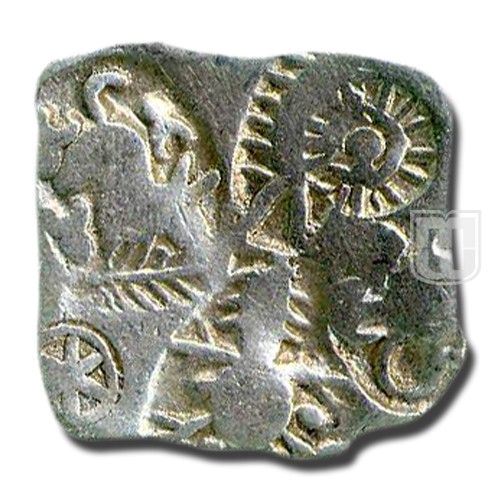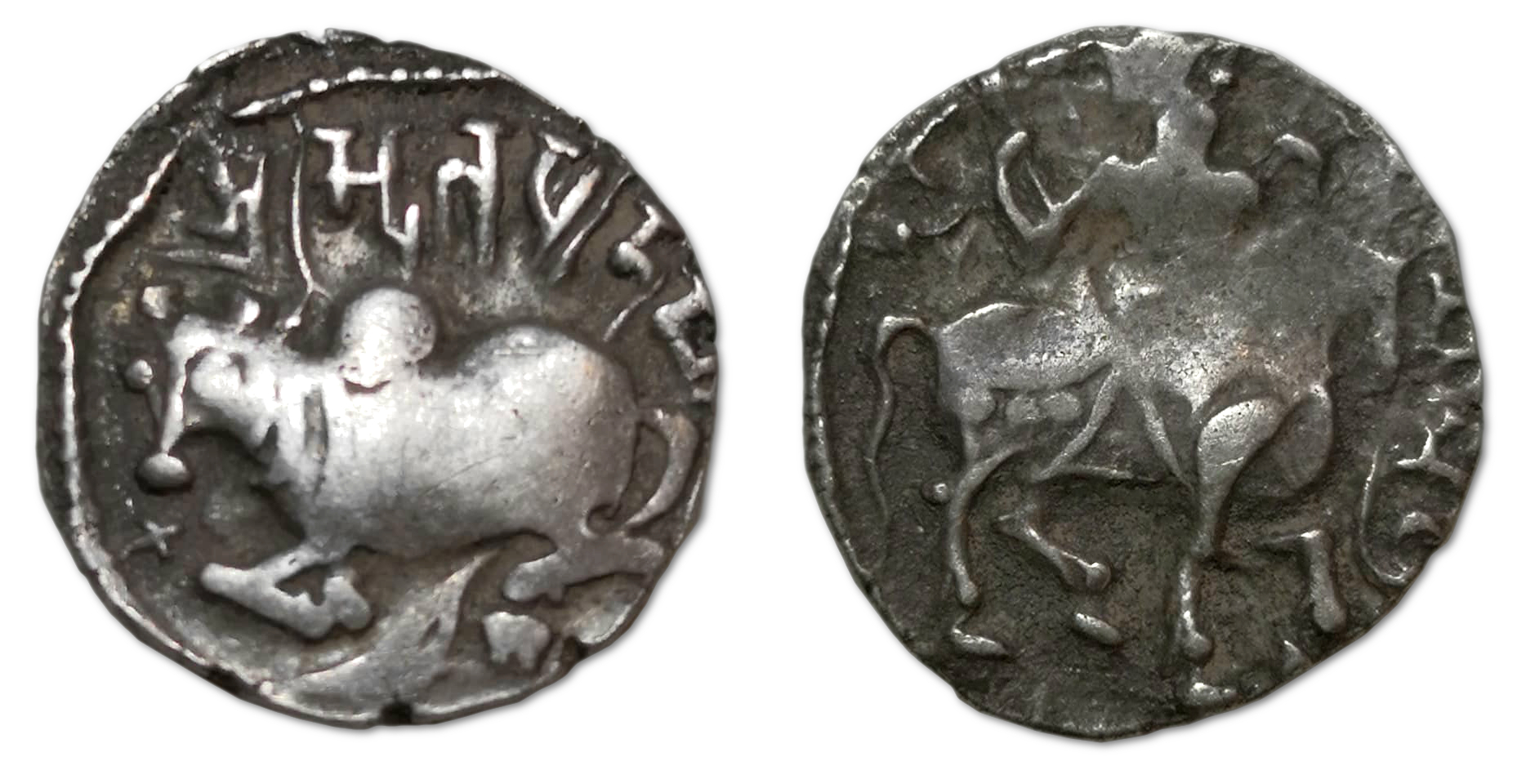Coinage of India, issued by imperial dynasties and middle kingdoms, began anywhere between the 1st millennium BC to the 6th century BC and consisted mainly of copper and silver coins in its initial stage.
The practice of minted coins spread to the Indo-Gangetic Plain from West Asia. The coins of this period were called Puranas, Karshapanas or Pana. The earliest Indian coins were not disk-shaped but rather stamped bars of metal, suggesting that the innovation of stamped currency was added to a pre-existing form of token currency which had already been present in the Mahajanapada kingdoms of the Indian Iron Age.
This category covers coins of e.g the Magadha Kingdom and the Mauryn Empire.
The practice of minted coins spread to the Indo-Gangetic Plain from West Asia. The coins of this period were called Puranas, Karshapanas or Pana. The earliest Indian coins were not disk-shaped but rather stamped bars of metal, suggesting that the innovation of stamped currency was added to a pre-existing form of token currency which had already been present in the Mahajanapada kingdoms of the Indian Iron Age.
This category covers coins of e.g the Magadha Kingdom and the Mauryn Empire.

(1)
Shri Samanta Deva
.jpg)
Obverse: Knight on horse
Reverse: Bull
Diameter:
-
Die Orientation: -
Weight: 3.35 g
Die Orientation: -
Weight: 3.35 g
Hindu Shahi of Kabul and Gandahara Shri Samanta Deva
No references provided for this coin
(2)
Sri Spalapati Deva

Obverse: Nandi bull reclining left, Nagari Sri Spalapati Deva (Honorable Chief Commander) above
Reverse: Horseman prancing right with lance, remnants of cursive Bactrian legend before
Diameter:
-
Die Orientation: -
Weight: 3.41 g
Die Orientation: -
Weight: 3.41 g
No notes for this coin
No references provided for this coin
